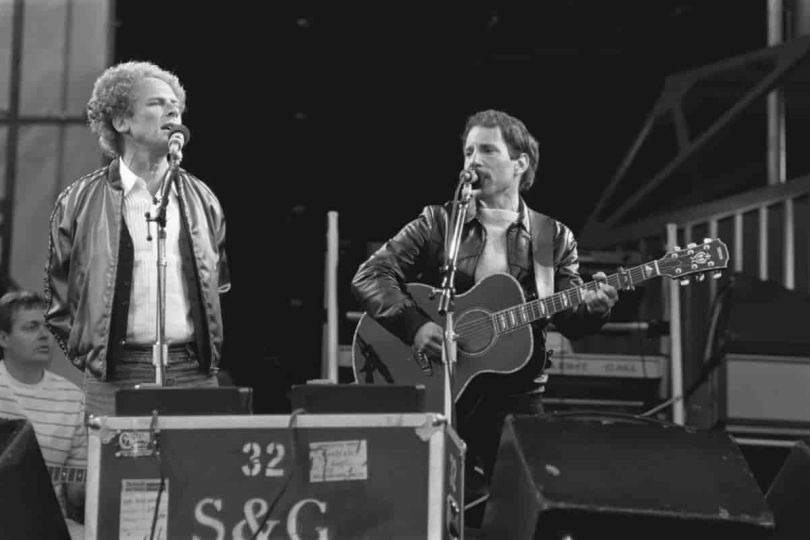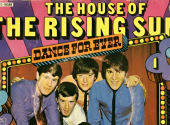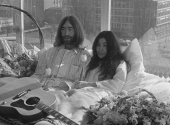
Story of a Hit #19: "The Sound of Silence"
Simon & Garfunkel had a short but prolific career, rising to become one of the most important duos ever to have graced popular music. But it all started with "The Sound of Silence", and if it weren't for a clever remix, the world might never have known the songwriting genius of this legendary team.
Paul Simon and Art Garfunkel started playing together in the 50s as teenagers, combining their appreciation for folk music, vocal harmonies, and the hope that being a musician would attract girls. At the age of 15, they even got themselves signed onto an independent label, and they had modest success with a few songs in the late 50s and early 60s. It was clear that the duo was destined for greatness.
The song that got them the record deal
But it was the "The Sounds of Silence" that really started their career, as they performed it for Tim Wilson at a studio audition and got themselves signed onto Columbia Records. Wilson produced three of Bob Dylan's early albums and is regarded as one of the most important early producers of folk-rock (amongst many other bands and styles). He produced Simon & Garfunkel's debut album, Wednesday Morning, 3 A.M., on which "The Sounds of Silence" was certainly the most shining track.
However, the album did not do well, selling only 3000 copies on release. This was the era of the Beatles and as a result of falling under the shadow of the British Invasion, the duo went their separate ways. Art Garfunkel went back to his studies and Paul Simon went to the UK, where he recorded his first solo album, including a solo guitar and voice version, "The Sound of Silence".
Songwriting genius
Paul Simon wrote the song when he was only 21 years old, and it's early proof of his songwriting talent. He said in an interview in 1984: "I used to go off in the bathroom (...) I'd turn on the faucet so that water would run (...) and I'd play. In the dark. 'Hello darkness, my old friend / I've come to talk with you again.'"
According to Garfunkel, the song represented "the inability of people to communicate with each other (...) people who are unable to love each other". Garfunkel said the lyrics took months to perfect, but the end result was a sadly beautiful picture of society, wrapped up in the now legendary musical expression "The Sound of Silence".
"People talking without speaking / People hearing without listening / People writing songs that voices never shared / And no one dared / Disturb the sound of silence."
And it might indeed have become a song that no voice ever shared, if it weren't for the clever remix by Tim Wilson, their original producer.
In 1965, Wilson noticed that the original track was gaining attention on radio stations in Boston and Florida, but felt it was too folky and soft for a wide release. In order to capitalise on the song's new attention, he took it upon himself to dress up the track and re-release it. He had previously experimented on Bob Dylan tracks, by adding electric instruments, but these recordings were never released.
An electric remix hit
So, unbeknownst to Paul Simon and Art Garfunkel, Wilson used session musicians from the work he had done on the Dylan tracks and added electric guitar, bass and drums to their original recording. It transformed the sound, from the folky almost mournful quality, to a harder driving arrangement. Because Simon & Garfunkel were no longer a "working entity", effectively having split after the flop of their first album, Columbia Records felt they didn't need to consult with the artists. Thus, they had no idea that a remixed version of their song had hit the radio.
The new version was released in 1965, and by the end of the year, had hit number one on the Billboard Hot 100, selling over a million copies. Suddenly Simon & Garfunkel were in the spotlight, and they returned to the studio in the US, to record a second album. While they rushed out the following album Sounds of Silence (1966), which included the remixed version as well as a number of other songs from Paul Simon's first solo album, the following Parsley, Sage, Rosemary and Thyme (1966) was a more carefully constructed effort, where they began to take greater creative control.
The rest is history
After that, film director Mike Nichols, who was inspired by their music, employed the duo to write songs for his upcoming film The Graduate. The result, the now legendary "Mrs. Robinson", was the duo's second chart-topper, and eventually won two Grammy Awards in 1969. Simon & Garfunkel would continue, with the Grammy-nominated album Bookends (1968), and Grammy-winning album Bridge over Troubled Water (1970).
While they split soon after their 5th album, at their peak, at the end of the 60s, Simon & Garfunkel were widely regarded as the biggest rock duo in the world. The acoustic version of "The Sound of Silence" is arguably now more well-known than the electric remix and their following songs retained that more folky sound. But we can't deny the importance of those tweaks made by producer Tim Wilson. Because without it, the world might never have known the genius of Simon & Garfunkel.
What do you think, is the acoustic or electric the better version? What do you think Simon & Garfunkel's greatest song is?
Leave your opinion in the comments below!
If you have found an error or typo in the article, please let us know by e-mail info@insounder.org.





